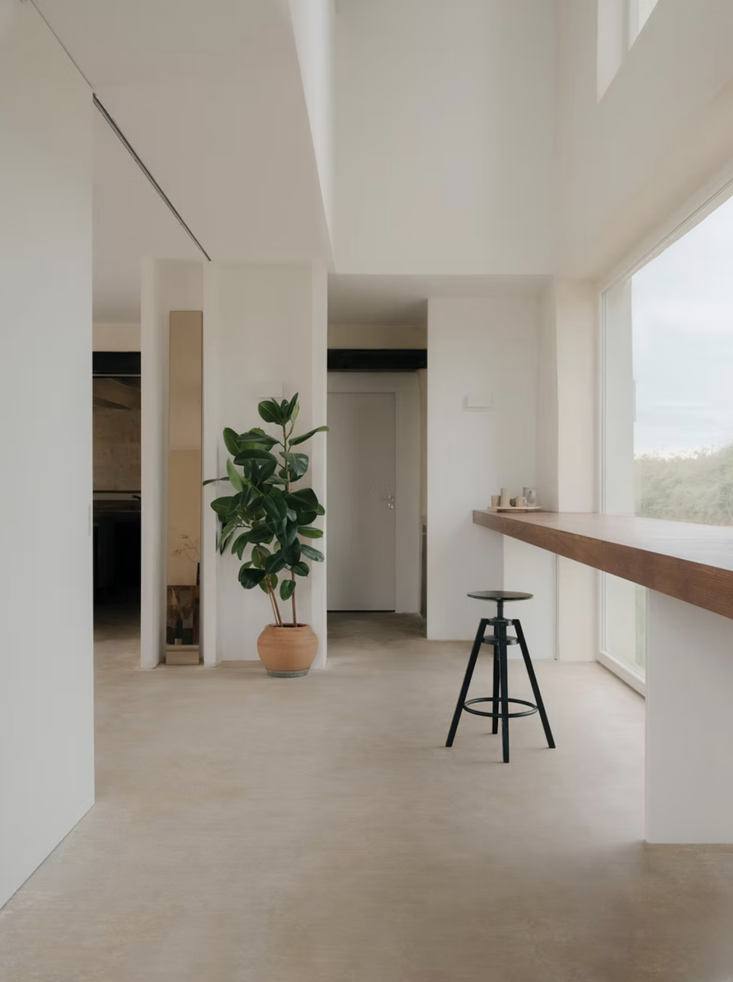Architects Caroline Weill and Letitia Paradis of the Paris-based practice Pareil focus on housing in all forms, aiming to “enhance existing properties with a modest and responsible approach to architectural intervention and application,” as they explain. One such property is Mas Baudran, an artist residence located in the commune of Arles in southern France. Situated at the edge of the Parc naturel régional de Camargue, along the Mediterranean, the 2.5-acre agricultural estate faces climate risks of rising water levels and salinization of groundwater. The resulting renovation from Pareil is both elegant and modern, achieving thermal efficiency, reducing carbon emissions, and preserving resources. Read on for more.
Photography by Jean-Baptiste Thiriet courtesy of Pareil.

Owners Sébastien, an environmental lawyer, and Sofian, a hairstylist-turned-ceramicist, moved permanently from Paris to the Arles farmhouse in 2021. Sofian had been the hairstylist for both Weill and Paradis before enlisting their practice for the project. The initial request was to renovate the house. “They were looking for more bedrooms, more space to entertain, an office for Sébastien’s remote work, and a ceramics workshop for Sofian’s own training,” Weill explains.

The owners knew from the start that the property would function as more than just their residence, and would be centered around environmental sustainability. The Mas Baudran artist residency project emerged as the initial plans were drawn. Their aim is to raise awareness and engage the general public on issues related to environmental preservation and climate protection through artistic creation, agroecology, and the interdisciplinary exchange among artists, lawyers, scientists, and activists. The artist residency includes a reception room, ceramics workshop, a multipurpose room for resident artists, and a main bedroom.

As the house is located within the Parc naturel régional de Camargue, all modifications were tightly controlled. They achieved thermal efficiency without the use of air conditioning and installed a heat pump for radiant heating. Solar panels were installed to the roof and insulated the roof using rice straw from the surrounding Camargue region, chosen for its insulating properties and local, low-impact origin. The straw is dried, lightly compacted (10-centimeter slats), and inserted between timber framing elements in the roof before being protected with a breathable membrane to ensure durability and to prevent moisture issues.

In order to protect from the salinity of the area, a deep well was installed to avoid salt water reaching fresh drinking water and either a lime coating or lime whitewash was applied to exterior surfaces to protect from salt air.
















For more renovations with sustainability in mind, see our posts:
- How Architects Remodel: A Design Couple Convert an Old Barn Into Their Low-Impact Family Home
- The Row House Next Door: In Astoria, Queens, a Couple Realizes the Sustainable Home of Their Dreams
- The DIY Tiny House Made from Hemp: A Community-Built Mobile Home from Common Knowledge in Ireland




Have a Question or Comment About This Post?
Join the conversation